Eid Mubarak 2021



Celebrating at the Al Aqsa Mosque — the Dome of the Rock — in Jerusalem earlier this year. Photo: The Guardian, London
Many Palestinians will be honouring the tradition of giving to charity during Eid al Adha, as well as enjoying great food and visits with family and friends. Whether you are Palestinian, or would just like to support their struggle under occupation, here are a few suggestions.
In London, Tabun Kitchen is offering a luscious Eid menu, based on Jerusalem home cooking, as well as raising funds for the UK-based Galilee Foundation which provides educational and cultural support for Palestinians in Israel.
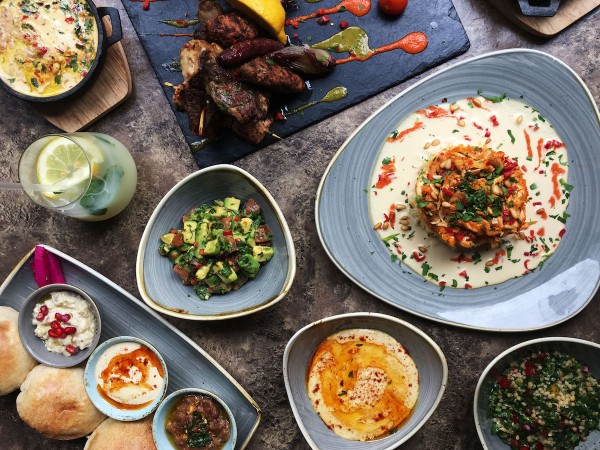
Eid al Adha Menu, Tabun Kitchen
In the US, you can help farmers and communities in the West Bank by purchasing premium olive oil, za’atar (a unique thyme-based seasoning), organic soap and other goodies from Al Ard. The firm was set up by the Anabtawi Group in Nablus specifically to encourage local production and exports, as well as access to higher education for Palestinians from rural areas.

Al Ard’s olive oil is available in a variety of sizes. Photo: promosibaraka
Alternatively, you can celebrate the Eid by donating directly to Zaytoun’s tree-planting project in the West Bank. It is run by the Palestine Fair Trade Association and aimed at women and young farmers, as well as those who have lost their fields due to the Israeli occupation and the uprooting of their olive and almond trees by Jewish settlers.
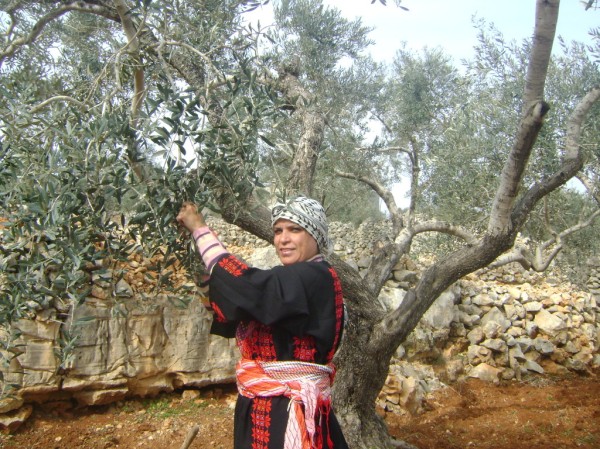
Helping farmers stay on their land in Jenin. Photo: Trees4Life.com
Whatever you, your family and friends choose to do, A Very Happy Eid from all of us here at InvestPalestine.

Two Palestinian children, in Jabaliyya refugee camp in Gaza, celebrating the first day of Eid al-Fitr. Photo: Khalil Hamra, AP.
A very Happy Eid, from all of us at InvestPalestine.com
— Pam

Palestinian families, in happier days, in front of the Al Aqsa Mosque — the Dome of the Rock — in Jerusalem. This Ramadan, many Palestinians may be unable to say their prayers at one of Islam’s holiest sites, due to provocations by Jewish settlers and Israel’s occupation of the Old City. Photo: Reuters, Muammar Awad
Despite the Palestinian Stock Exchange surpassing all others in the Arab world last year, the dawn of 2016 in the West Bank brought somber news: the death toll of Palestinians killed by Israeli forces in East Jerusalem and the West Bank since October had risen to 142. Another 15,000 had been injured, many of them seriously.
Many Israelis, too, now live in constant fear, even though their own dead and injured are a fraction of those killed “on the other side.” No end is in sight, not least because Prime Minister Benjamin Netanyahu’s fragile coalition government is dependent on the most extreme Israeli settler movements, who regard occupied East Jerusalem and the West Bank as their own.
Measures by the World Bank and the Quartet–the body which represents the US, the EU, Russia and the UN–to focus on the development of the private sector in the West Bank, and the need to alleviate the very high levels of unemployment, give a ray of hope, as does the EU’s ruling last year on the labelling of produce from the Palestinian territories. But recent efforts by Tel Aviv to bolster the Palestinian economy with long overdue measures, such as giving 3G spectrum licenses to Palestinian telecoms firms at a time when 4G is standard, only confirm the pessimism of many in Ramallah, Jericho, Hebron, Bethlehem and Nablus, never mind Gaza City and Khan Younis, as well as East Jerusalem. They increasingly doubt that the international community is willing to take the tough moves needed to change the rapidly deteriorating situation on the ground.
Now, more than ever, the impressive and growing solidarity of Palestine’s grass roots supporters around the world, combined with the faith and confidence of its investors and benefactors, especially in the diaspora, is needed.
We’ll be keeping tabs on all this, and, after a hiatus in 2015, we’ll again be giving you the news and insights you need on Palestine’s economy, including its vital political dimension. Stay tuned…. and,
A Very Happy 2016,
from all of us here at InvestPalestine.
Pam
© Pamela Ann Smith
This is a publication of investpalestine.wordpress.com and is protected by international copyright laws. This article is for the reader’s personal use only, but may be re-distributed electronically with a credit to investpalestine.com.
A time of sacrifice, family and food. A time of giving. Eid Mubarak!
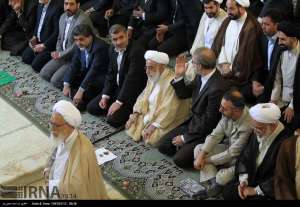
Ayatollah Mohammad-Ali Movahedi Kermani at Eid al Adha prayers, Tehran University, October, 2014. Photo courtesy of TheIranProject.com.
Let’s hope that the rapprochement with Iran will lead to a safer world. And that it will bring peace and prosperity to all.
With all good wishes,
InvestPalestine.com
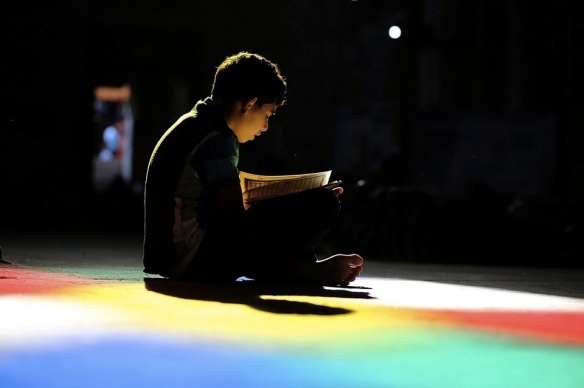
A Palestinian Boy Reads the Quran in the Al Omari Mosque, Gaza City, on the first day of Ramadan.
Photograph: Mohammed Saber/EPA, The National.
Yes, resilience and survival are vital in these days of shattering upheaval….
But so too is a sense of reverence, so that we may preserve our dignity, and our hope for a better future for our children.
— Pam

In a Christmas card designed by Banksy, a UK-based artist and political activist, the Holy Family — Joseph and Mary — head towards Bethlehem only to find Israel’s ‘Separation Barrier,’ preventing their way.
This Christmas, the card, with all of its implications for humanity’s universal rights — as well as for Christianity’s heritage — has spread like wildfire. Picture Credit: Al-Ahram.
A biblical theme, set in the contemporary reality that is Bethlehem, East Jerusalem and the West Bank, as well as Gaza. Conflict, destruction, separation, oppression.
Let’s hope that 2015 will bring a real prospect of peace, with justice, further forward, not to mention a minimum of prosperity for all.
— From Pam and all our contributors,
Wishing you the Best of Greetings for this Festive Season.
To most people around the world, the word ‘Gaza’ conjures up images of rockets and bombs, wars, poverty and invasion, never mind the appalling conditions in which many of its residents live as a result of the ongoing Israeli blockade and, most recently, the massive Israeli attack on the enclave — its third in the past six years. But, while one international commentator wrote recently, “It’s not too fanciful to see it in the future as the ‘Dubai’ of the Eastern Mediterranean,” Gaza has much more to offer given its 3,000 years of culture and its history as a prosperous trading hub connecting Africa and Asia, Europe and the Middle East.
(Click on the photo to enlarge.)
In the 19th Century, Gaza’s renowned soap factories, like those in Nablus, produced luxury goods that were exported around the world. It’s premium cotton crop, fruits, vegetables and spices were in great demand. Gaza’s merchants catered to a vast array of travelers: European visitors to the Holy Land, caravans from Egypt and North Africa, pilgrims from the Arabian Peninsula and Asia. Its bazaars were regarded as even better than those in Jerusalem.

Founded in the 14th Century, Khan Younis in southern Gaza served as a centre of the caravan trade between Asia and Africa. Photo: Marka, Wikipedia.org
Before the latest invasion, the Washington-based International Monetary Fund estimated that Gaza’s GDP would rise by 7 per cent in 2013 and 6.5 per cent this year, figures that any European country would envy. But the destruction by Egypt, as well as Israel, of the underground tunnels, which allowed much needed supplies to be brought in despite the blockade, has ended any hopes that Gaza can survive on its own, never mind grow.
Earlier this year, it was expected that increases in international aid, especially from the European Union and the UN following Israel’s onslaught in November, 2012, would counter some of the setbacks. The rise in development funds, from both government and private sources in the Gulf states – including Qatar, the UAE and Saudi Arabia – was also contributing to a new era of hope and confidence in Gaza. Qatar’s building projects, covering everything from schools, roads and hospitals to new housing and infrastructure projects alone were expected to create some 10,000 jobs by next year.

The University College of Applied Sciences in Gaza. Many more schools and higher education facilities are needed. Photo: Ahmed Fuad.
Surprisingly, until the latest assault, the growing international awareness and support for Gaza’s people had also led to a boom in tourism in the enclaves’ new hotels, restaurants and shopping malls. International solidarity activists, NGO staff and aid officials were helping to boost capacity and business to levels not seen since the Israeli bombardment of late 2008.
The desire of Gaza’s newly rich elite to live in up-to-date, spacious accommodation, combined with the eagerness of its private investors to seek out alternatives to the tunnel trade, helped to fuel a boom in real estate, retail and leisure services, as well as increased demand for international luxury brands.
Meanwhile, a host of recent studies, from the World Bank, Israeli academics and the Gaza-based PalThink research centre have pointed out that concrete measures will also be needed to be introduced by Hamas if Gaza’s huge economic potential is to be realized, even if the Israeli siege is lifted, or substantially eased.
In particular, they cite the need for more institutional support for the private sector, an overhaul of the tax regime, and measures to boost agricultural and industrial productivity, as well as export capacity.
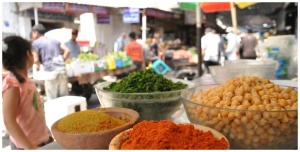
Gaza could produce a huge array of fruits, vegetables, nuts, dates, olive oils and spices for export, if the seige were lifted. Photo: The Gaza Kitchen, Just World Books, 2013

Gaza’s fishermen used to supply Egypt, Israel and neighbouring Arab states, but Israeli restrictions mean the fishermen cannot even supply domestic demand. Photo: The Gaza Kitchen, Just World Books, 2013
Special attention, they add, should be given to those sectors, such as manufacturing, construction and tourism, which would provide the most jobs. Vocational training projects, as well as a re-vamp of the entire educational system, plus incentives for the ICT and telecoms sector, they say, are urgently needed to help Gaza realize its opportunities in a globalized marketplace.
While the Bank of Palestine and other financial institutions have continued to provide, often under the most difficult circumstances, access to cash and funds in Gaza, Hamas will also need to ensure that any lifting of the Israeli siege, both for business people and cargoes, is accompanied by closer co-ordination of trade and regulations with the Palestinian Authority in Ramallah. Gaza’s dependence on the use of the Israeli shekel (NIS) as its main currency, together with its heavy reliance on money-lenders rather than on banks which can gather deposits and direct them to profitable development projects, could hold up progress in the future as more aid and investment pours in, and as reconstruction begins, once again, in earnest, the reports note.

If Gaza City is to thrive again, Hamas will need to introduce economic and financial reforms, as well as seeking to end the Israeli blockade. Photo: Al Jazeera English
Arab and Islamic tourism to Gaza, as well as to Jerusalem and the West Bank, could also be greatly increased by agreements with Egypt on developing the Sinai Peninsula and the border areas with Gaza, Oman Shaban, the founder and director of the Gaza-based think tank, PalThink, argues. “Tourism in the Sinai Peninsula [which would also benefit Egypt directly] represents a golden opportunity for tens of thousands of Palestinian families in the Gaza Strip, the West Bank and Jerusalem due to visitor appeal and modest costs,” he maintains.
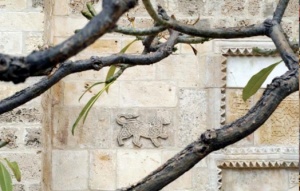
Dating back to the 13th Century, the Pasha’s Palace has been occupied by various rulers of Gaza, from the Mamlukes and Ottomans to Napolean and the British. The UN is now helping to restore it as a major tourist site. Photo: UNDP
Talks between the PA and Israel that were underway to begin exploiting the rich reserves of natural gas, and possibly oil as well, lying just off Gaza’s shores in the Mediterranean, have also been put on hold. Valued at some $7 billion, they could help to end Gaza’s critical shortage of fuel and electricity as well as providing substantial revenues to build new schools, hospitals, roads, ports and even an airport, as well as vitally needed new water and wastewater facilities. Gas exports either through Egypt or Turkey, could boost the PA’s coffers for years to come, and help to reduce both Gaza and the West Bank’s huge dependence on international aid, speeding up the day when Palestine can become self-sufficient.

Gas reserves valued at $7 billion lying off the coast of Gaza could greatly reduce Palestine’s dependence on foreign aid. Photo: Michel Chossudovsky
Hamas’s newfound unity with the PA in Ramallah and the solidarity for Gaza shown by Palestinians in the West Bank and East Jerusalem, as well as by people around the world, bodes well for bringing Gaza into a regional network that could benefit Israel as well as Palestine. But for that to happen, more pragmatic heads will need to surface in Tel Aviv and Cairo, as well as in Gaza City.
© Pamela Ann Smith
This is a publication of investpalestine.wordpress.com and is protected by international copyright laws. This article is for the reader’s personal use only, but may be re-distributed electronically with a credit to investpalestine.com.
An earlier version of this article appeared in the July, 2013 issue of The Middle East magazine.